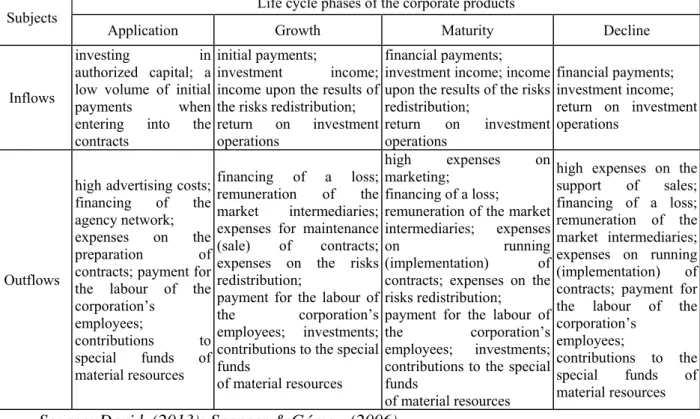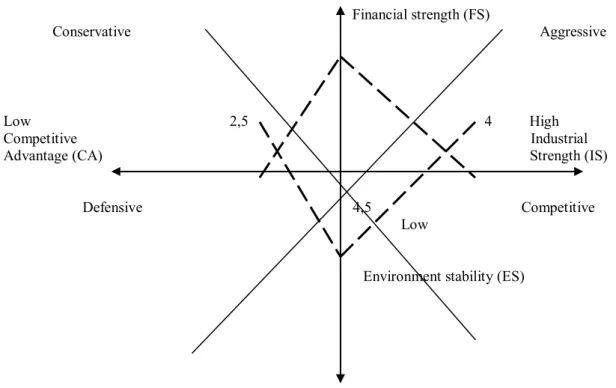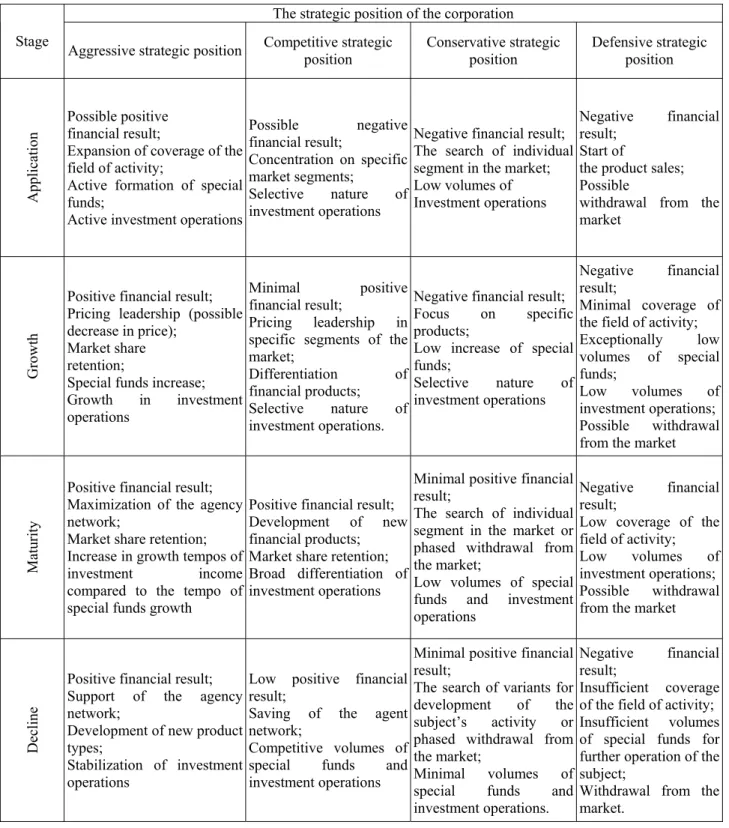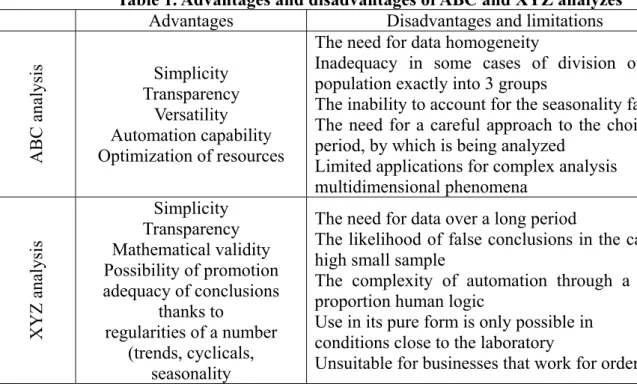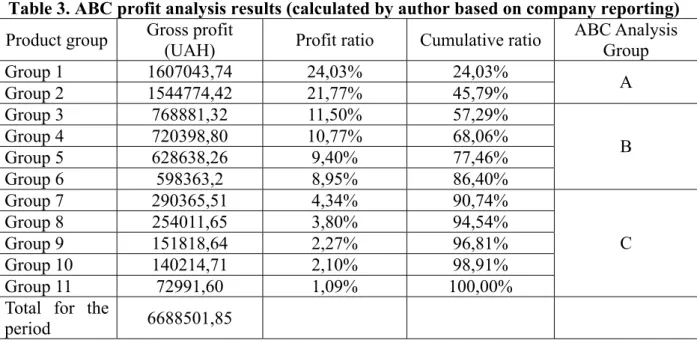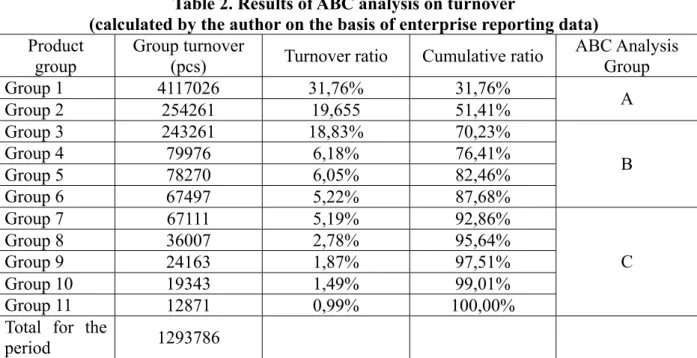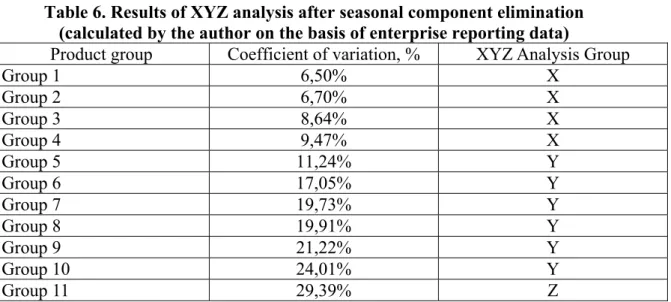Online ISSN: 2663-7952
scientific journal
Economics and Finance
Volume 9 / Issue 1 / 2021
2021
Editor-in-Chief:
Dr., Prof. Svetlana Drobyazko Editorial board:
Dr. Andris Denins, Latvia Dr. Andrej Udovč, Slovenia Prof. Brezina Ivan, Slovakia Dr. Dimitar Kanev, Bulgaria
Dr. Konstantin Savov Kalinkov, Bulgaria Dr. Nikolay Majurov, Russia
Dr. Nadia Dimitrova Mironova, Bulgaria Prof. Nedelea Alexandru-Mircea, Romania Dr. Valeriy Okulich-Kazarin, Poland
Dr. Reena Agrawal, India Dr. Ruta Šneidere, Latvia
Dr. Parikshat Singh Manhas, India Dr. V.Babich, USA
Prof. Jarosław Jerzy Turłukowski, Poland Prof. Nada Vignjević-Djordjević, Serbia Dr. Shatalova Nina Ivanovna, Russia Dr. Czempas Jan, Poland
Dr. Alexandrina Pauceanu, United Arab Emirates Dr. Uqbah bin Muhammad Iqbal, Malaysian Arjeta Hallunovi, Ph.D. in Economics, Albania Dr. Sahera Hussein Zain AL-Thalabi, Iraq
© «Economics and Finance», 2021 Agenda Publishing House Limited, London, United Kingdom
CONTENTS
Oksana Nesterenko, Angelika Krutova, Oksana Blуznіuk, Olena Zhyliakova, Iryna Andriushchenko
MANAGEMENT ACCOUNTING OF COSTS FOR HUMAN CAPITAL OF THE SERVICE ENTERPRISE
4
Anatolii Chynchyk, Lyudmyla Bilanych
TAX POLICY IN THE CONTEXT OF GLOBALIZATION CHALLENGES 12 Nina Avanesova, Sulaiman Tahajuddin,Olha Hetman,Yuliia Serhiienko,
Vyacheslav Makedon
STRATEGIC MANAGEMENT IN THE SYSTEM MODEL OF THE CORPORATE ENTERPRISE ORGANIZATIONAL DEVELOPMENT
18
Ibrokhim Xabibullayev, Ruslana Zhovnovach, Mariia Petrova
MODEL OF ASSORTMENT OPTIMIZATION AND INVENTORY MANAGEMENT IN ENTERPRISE
31
JEL Classification: K40, K49
Oksana Nesterenko,
Doctor of Economics, Associate Professor,
Kharkiv State University of Food Technology and Trade, Ukraine ORCID: orcid.org/0000-0002-9516-0917
Angelika Krutova,
Doctor of Economics, Professor,
Kharkiv State University of Food Technology and Trade, Ukraine ORCID: orcid.org/0000-0002-7154-6233
Oksana Blуznіuk,
PhD (Economics), Associate Professor
Kharkiv State University of Food Technology and Trade, Ukraine ORCID: orcid.org/0000-0003-1321-1563
Olena Zhyliakova,
PhD in Economics, Associate Professor
Kharkiv State University of Food Technology and Trade, Ukraine ORCID: orcid.org/0000-0003-4580-1752
Iryna Andriushchenko,
PhD in Economics, Associate Professor
Kharkiv State University of Food Technology and Trade, Ukraine ORCID: orcid.org/0000-0002-4028-6782
MANAGEMENT ACCOUNTING OF COSTS FOR HUMAN CAPITAL OF THE SERVICE ENTERPRISE
Received 04 January 2021; accepted 09 January 2021; published 12 January 2021
Abstract. The systematic study, critical assessment of theoretical provisions and current practice of accounting organization of costs for human capital of the service enterprise, improvement of accounting mechanisms for the use of personal human assets and human capital of the enterprise are provided in the article. It is proved that the need to reflect human capital in accounting is due to the following factors: human capital is considered an integral part of national wealth; determining the main role of human knowledge, abilities, qualifications, and education in the process of social production; change of attitude to a person that is the appreciation of its creative potential and intellectual abilities. Characteristic definitions of human capital in aspects of different spheres of its functioning are analyzed. Peculiarities of normative and legal regulation of human capital as an intangible asset under SSAP and IFRS and identification of contradictions in accounting of personnel costs under the current accounting system are considered. The peculiarities of the organization of primary accounting of human capital at the enterprises of the service sphere are considered. It has been proposed to record information on the costs for human capital in terms of the processes of its formation, use, and development in the Employee Data Card (standard form P-2) by introducing an additional Section VI “Costs per employee.” The financial statements of analytics have been improved to Form No.1 of the Balance Sheet (Statement of
Financial Condition) by introducing analytics in the first section of liabilities in the item
“Additional capital” of information on human capital of the enterprise, which will generate financial statements for full disclosure to stakeholders, especially investors. Suggestions are given for the prospects of further development: research of accounting of costs for personnel of the enterprise depending on the life cycles of personnel and the enterprise, development of theoretical and methodological bases of corporate social reports on human capital, improvement of personnel value assessment methods (especially residual and liquidation value).
Keywords: human capital, accounting organization, additional capital, intangible asset, personal human asset.
Reference to this paper should be made as follows: Nesterenko, O.; Krutova, A.; Blyzniuk, O.; Zhyliakova, O.;
Andriushchenko, I. (2021). Management accounting of costs for human capital of the service enterprise. Economics and Finance, Volume 9, Issue 1, 4-11. http://doi.org/10.51586/2311-3413.2021.9.1.4.11
Introduction
A person in a consumer society strives to consume in such a way that, on the one hand, he (she) is no worse than others, and, on the other, he (she) does not merge with the crowd. Individual consumption reflects not only the social characteristics of the consumer (as a demonstration of social status) but also the characteristics of the individual lifestyle. All these features change the personnel of enterprises, while the characteristics (properties) of the personnel themselves change, and specific ones appear depending on the economic activity.
All this requires a change in the worldview of the company to personnel as a special and priority resource – the transformation of the entire resource management system of the enterprise, its components (accounting, analysis, planning, organization, control, etc). Manifestation of the concept of human capital in the theory of economic thought necessitates the creation of effective information support, which became a prerequisite for the creation of the concept of accounting for human resources (human capital, personnel).
Literature Review
Modern “theory of human capital” as a field of economics, in which the human component of economic systems of different scales is considered in terms of value and price and differs in definition by three levels:
– at the level of personality (nanolevel) human capital is a system of knowledge and abilities that a person has acquired through education, training, practical experience (using their natural abilities) and through which it can provide valuable production services to other people - personal (private) human capital (Cleary, P. et. al. (2016); Cuozzo, B. et. al. (2017); Dumay J. (2016));
– at the enterprise level (microeconomic level) human capital is the total qualification and professional abilities of all employees of the enterprise, as well as the achievements of the enterprise in the effective organization of labor and personnel development - the intellectual capital of the enterprise (Goldin, C. (2016));
– at the state (macroeconomic level) human capital is the accumulated investment in areas such as education, vocational training and retraining, career guidance and employment, health improvement, etc. National human capital is an
essential part of the national wealth of the country (Guthrie J., Parker L. D. (2016);
Secundo G., et.al. (2016)).
In our opinion, to identify the types of human capital and to form appropriate definitions, it would be more appropriate to use an approach that would take into account the differences of individual forms of capital, as this term is the basic
“creator” of the concept of “human capital”.
The analysis of scientific publications allowed to group different definitions of human capital in aspects of economic, cultural, and social sphere of its functioning and to define characteristic features of the received groups. According to the analysis, it can be concluded that the category of human capital is a multifaceted concept.
However, in the economic sense, it is primarily a real source of funds that can be directly invested in the development of a particular person or group (team, group, nation, etc).
Paying tribute to the scientific achievements and practical significance of the results, it should be noted that a number of tasks to compare income and expenditure in human resources, determine the effect of the implementation of specific personnel costs of investment nature, take into account opportunity costs in determining expected future economic benefits, and to elaborate internal (corporate) social reporting are not sufficiently developed.
Methods
The purpose of the paper is a systematic study, critical assessment of theoretical principles and current practices of accounting organization of costs for human capital of the service enterprise, improvement of accounting mechanisms in terms of the use of personal human assets and human capital of the enterprise.
In accordance with the purpose of the paper, the following tasks are set:
to investigate the economic content of human capital of the enterprise as an object of accounting;
to get acquainted with the regulatory and legal support of accounting for human capital of enterprises in Ukraine;
to study the peculiarities of the organization of primary accounting of human capital;
to consider the features of synthetic and analytical accounting of human capital;
to suggest ways to improve the accounting of human capital and personal human assets in the service enterprise.
Results
The inability of the accounting system to aggregate the objects of human capital, and financial reporting under modern standardization to provide market institutions with a formalized assessment and, along with it, the cost characteristics of the company, leads to the use of weakly formalized information models.
We believe that in terms of accounting, human capital is a component of the intangible assets of the enterprise.
Traditional accounting considers only the resources that are the property of the enterprise. Due to the fact that personnel, as a special type of resource, can be neither property nor an object of property, the representatives of traditional accounting do not consider it as an object of accounting – an asset (resources controlled by the enterprise as a result of past events, the use of which, as expected, leads to economic benefits in the future).
In our opinion, the need to reflect human capital in accounting is due to the following factors: human capital is considered an integral part of national wealth;
determining the main role of human knowledge, abilities, qualifications, and education in the process of social production; change of attitude to a person – appreciation of its creative potential and intellectual abilities; the transition to a “post- industrial economy” has led to an increase in the role of the non-monetary component of capital, which creates the main part of value added; a significant increase in the share of goodwill in the asset structure of multinational corporations, the precondition for which is the lack of reflection in the accounting of human capital.
We believe that to reflect the costs of personnel development as current costs from an economic point of view is impractical because the cost of professional development, personnel training is not in itself a “used resource”, so to include these costs in current costs or cost of production of services for the reporting period is not possible. In addition, including the personnel costs that meet the conditions of capitalization in the period costs, the enterprise thus underestimates its financial result and the value of the assets of the balance sheet.
The valuation model, which is based on the capitalization of labor costs, training and development, will allow to most accurately determine the economic value of labor.
However, there are some inconsistencies in accounting for personnel costs.
First, in accordance with International Financial Reporting Standards (hereinafter - IFRS), the costs incurred by the enterprise can be reflected either as an asset or as period costs, ie the concept of “future periods costs” in IFRS is absent (International Accounting Standard 38). Therefore, when preparing financial statements in accordance with IFRS, if the option of accounting for personnel development costs as future periods costs is chosen, they should be reclassified and identified separately.
Second, it is unacceptable to account for personnel development costs as current costs, as the costs of professional development, preventive examinations, and health improvement of employees are not “used resources”, so they can not be included in current costs or costs of production of goods (works, services) of the period in which they were incurred. In addition, if the personnel costs incurred need to be capitalized, then this accounting option leads to an understatement of the financial result and the value of the assets of the balance sheet.
Thus, we can conclude that the current Ukrainian practice of cost accounting personnel development does not take into account their accounting and economic nature, which ultimately leads to a violation of one of the main principles of accounting – prudence and does not comply with IFRS, and therefore there is the
need for improvement. This is especially true of the cost, which accumulates the human capital of the enterprise and increases its value and value for the enterprise.
The formation of human capital in the service sector should take place in two directions:
1. Professional development of personnel: employee training; retraining of employees; advanced training of employees.
2. Personnel retention: personnel health improvement; social services.
It is according to this classification that human capital will be capitalized.
The formation of human capital is due to the receipt of services for training, retraining, etc. It is necessary to form a primary observation of the relationship between the customer and the supplier.
Forms of internal primary accounting documentation are the basis for displaying information on the facts of business transactions in the accounting registers.
It should be noted that for the accounting of intangible assets, which are proposed to reflect investments in human capital formation, the Ministry of Finance has developed and approved unified forms (About the statement of standard): Act of introduction of intellectual property into circulation as part of intangible assets (standard form IA-1); Inventory card of registration of the intellectual property as a part of intangible assets (standard form IA-2); Act of disposal (liquidation) of the intellectual property as part of intangible assets (standard form IA-3); Inventory description of intellectual property as part of intangible assets (standard form IA-4).
However, the forms of primary accounting documents can be used to record the relevant employment contracts or training of employees.
At the same time, information on the cost of human capital in terms of the processes of its formation, use, and development can be recorded in the Employee Data Card (standard form P-2) as an additional Section VI “Costs per employee”
(Table 1).
Table 1. Employee Data Card - VI “Costs per employee”
Type of costs Amount of
expenses, UAH
Grounds,
No of order Notes 1.Costs for professional development of the
employee
– Training of employees – Retraining of employees
– Advanced training of employees 2.Cost for personnel retention
– Health improvement – Social services
The part of human capital costs (investments in formation and development) that meet the criteria for recognition as intangible assets should be reflected in assets and liabilities, income, and costs.
This type of information must be documented by the relevant package of documents: Contract for the provision of services (performance of works), Order on
the search for personnel, Work Completion Certificate, a copy of the announcement, etc.
This approach to the organization of primary accounting of human capital costs will form an effective personnel policy at the enterprise, which will further increase employee loyalty, become a motivating factor, increase productivity, and reduce staff turnover.
Given all the above in the previous sections, we consider it appropriate to introduce separate sub-accounts to account for operations related to the personnel development and retention. With these accounts, the analysis of human capital costs is deepened and the list of accounting objects is expanded, which helps to avoid inconsistencies in the formation of financial results. To account for human capital, a separate synthetic account 128 “Personal human assets” should be created. This account will not take into account the employees themselves but only the rights to use the knowledge and qualifications of employees.
Improvements in accounting methods for the segment of personnel costs in terms of the element “accounts and double entry” are given in Table 2.
Table 2. Synthetic and analytical accounts for management accounting of personnel costs 128 “Personal human assets”
128.1 “Personal (human) assets of
accounting service”
128.2 “Personal (human) assets of personnel service”
128.3 “Personal (human) assets of
the legal department”
128.4 “Personal (human) assets of the administration”
128.N “Personal (human) assets of the n-th division”
99 “Human resources development costs”
991 “Professional development costs” 992 “Personnel retention costs”
991.1
“Training costs”
991.2
“Employees retraining costs”
991.3 “Advance training costs”
992.1 Costs for health improvement of
personnel
992.2 Costs for social
services
993 “Costs for pseudo-human development”
154.1. “Recognized personal (human) assets”
154.1.1 “Recognized personal (human) assets of the accounting service”
154.1.1.1
“Training”
154.1.1.2
“Retraining of employees”
154.1.1.3
“Advanced training of employees”
154.1.1.4 “Health improvement”
154.1.1.5 “Social services”
426 “Human capital of the enterprise”
426.1 “Human capital of the
accounting”
426.2 “Human capital of personnel
service”
426.3 “Human capital of the legal
department”
426.4 “Human capital of the administration”
426.N “Human capital of the n-th
division”
Service enterprises in many cases conduct multidirectional activities and, for the convenience of management accounting, costs and revenues are determined by
the centers of responsibility. For example, if the service enterprise is a hotel complex, then it is convenient to account for costs and revenues separately for the actual hotel, restaurant, and other subsystems of the complex. This requires the need to introduce analytical accounting of employees’ human capital development costs by centers of responsibility and by cost items.
Thus, in accordance with the current methodology, in the form No.1 “Balance Sheet (Statement of financial condition)”, the assets provide information on non- current assets, current assets and non-current assets held for sale, and disposal group, liabilities provide information on equity, long-term, and current liabilities. In accordance with the terms of the double entry of business transactions, our proposals for improving Form No.1 relate to:
in the first section of assets “Non-current assets”, the value of objects that are classified as intangible assets is displayed, in which we propose to reflect personal human assets;
in the first section of liabilities in the item “Additional capital”, we propose to reflect the formed human capital of the enterprise. That is why we consider it expedient to introduce additional articles to this section (Table 3).
Table 3. Fragment of the form No.1 “Balance Sheet (Statement of Financial Condition)”
(author's suggestions)
Liabilities Line
code
At the beginning of the reporting
period
At the end of the reporting period
… … … …
Additional capital 1410 130 260
… … … …
including human capital* 1631 26 75
In our opinion, the proposed structure of accounts and the working plan of accounting accounts at the enterprise will: increase the informativeness of accounting data for effective management decisions; clearly separate and analyze the cost of human capital components of an individual employee and the cost of human capital of the enterprise as a whole by summarizing the information on analytical accounts;
reflect human capital in the assets; allow to approximate the book value of the enterprise with its market value.
Discussion
In general, human capital at the personal level at the microeconomic and macroeconomic levels is considered. The characteristic definitions of human capital in aspects of different spheres of its functioning were also analyzed. In our opinion, the need to reflect human capital in accounting is due to the following factors: human capital is considered an integral part of national wealth; determining the main role of human knowledge, abilities, qualifications, and education in the process of social production; change of attitude to a person - appreciation of its creative potential and intellectual abilities; the transition to a “post-industrial economy” has led to an
increase in the role of the non-monetary component of capital, which creates the main part of value added; a significant increase in the share of goodwill in the asset structure of transnational corporations, the precondition for which is the lack of reflection in the accounting of human capital.
Conclusion
The peculiarities of the organization of primary accounting of human capital at the service enterprises are considered. It was proposed to record information on the cost for human capital in terms of the processes of its formation, use, and development in the Employee Data Card (standard form P-2) by introducing an additional Section VI “Costs per employee”.
Prospects for further development are the study of accounting for personnel costs of the enterprise depending on the life cycles of personnel and the enterprise, development of theoretical and methodological principles of corporate social reports on human capital, improvement of personnel valuation techniques (especially residual and liquidation value).
References
Cleary P., Quinn, M. (2016). Intellectual capital and business performance: An exploratory study of the impact of cloud-based accounting and finance infrastructure. Journal of Intellectual Capital. 17(2). - P. 255-278.
Cuozzo B., Dumay J., Palmaccio M., Lombardi R. (2017). Intellectual capital disclosure: a structured literature review. Journal of Intellectual Capital. 18(1). - P. 9-28.
Dumay J. (2016). A critical reflection on the future of intellectual capital: from reporting to disclosure. Journal of Intellectual capital. 17(1). - P. 168-184.
Goldin C. (2016). Human capital. Handbook of cliometrics. - P. 55-86.
Guthrie J., Parker L. D. (2016). Whither the accounting profession, accountants and accounting researchers? Commentary and projections. Accounting, Auditing & Accountability Journal.
29(1). - P. 2-10.
Secundo G., Dumay J., Schiuma G., Passiante G. (2016). Managing intellectual capital through a collective intelligence approach: An integrated ramework for universities. Journal of Intellectual Capital. 17(2). - P. 298-319.
International Accounting Standard 38 Intangible Assets. URL:
http://zakon4.rada.gov.ua/laws/show/929_050/page (date of application: 09.01.2021).
About the statement of standard forms of the primary account of objects of the intellectual property rights as a part of intangible assets. URL: http://zakon2.rada.gov.ua/ laws/show/z1580-04.
(date of application: 09.01.2021).
JEL Classification: Е62, H20
Anatolii Chynchyk,
Candidate of Economic Sciences (Ph.D.), Associate Professor Kyiv National University of Construction and Architecture, Ukraine
ORCID: https://orcid.org/0000-0003-4017-4753 Lyudmyla Bilanych,
Candidate of Economic Sciences (Ph.D.), Augustyn Voloshin Carpathian University, Ukraine
ORCID: https://orcid.org/0000-0002-9005-6985
TAX POLICY IN THE CONTEXT OF GLOBALIZATION CHALLENGES
Received 09 January 2021; accepted 13 January 2021; published 15 January 2021
Abstract. The main globalization challenges and opportunities for the formation of state tax policy in conjunction with the tax strategy are highlighted in the article. The problems and consequences of tax competition between states are studied. The peculiarities of the formation of national tax policy are summarized and the challenges posed by globalization processes are analyzed.
Key words: national economics, globalization challenge, taxes, tax policy, tax crime, tax competition.
Reference to this paper should be made as follows: Chynchyk, A.; Bilanych, L. (2021). Tax policy in the context of globalization challenges. Economics and Finance, Volume 9, Issue 1, 12-17. http://doi.org/10.51586/2311- 3413.2021.9.1.12.17
Introduction
Globalization can have both positive and negative effects on the tax sphere. In case of acquiring negative signs, globalization challenges arise. It is necessary to understand them in order to take them into account when formulating the tax policy of the state, which is designed to level them or transform them into new opportunities. At the same time, the tax policy of states also plays a role in globalization processes in terms of their financial and economic component. The economic development of the state and its further integration into the world financial and economic space depend on the effectiveness of tax policy, taking into account the global challenges and opportunities.
Literature Review
The results of the study were obtained using the ideological developments of Ukrainian (Davtyan (2016), Ivanov (2018), Karlin (2014), Polivantsev (2013)) and foreign (P. Egger, S. Nigai, N. Strecker (2019), D. Swank (216)) scientists who have dealt with issues of taxes and the impact of globalization on them.
Methods
Purpose of this study is to identify the main challenges and opportunities posed by globalization, which must be taken into account when forming the tax policy of the modern state to ensure the competitiveness of its tax system.
Results
Tax policy and its tools have a significant impact on globalization. While maintaining the functions of the main lever to fill the budget, taxation begins to have a significant impact on the international location of production, direct and portfolio investment, activity of financial markets, and more. The new role of taxation is manifested in the functioning of various integration groups, in particular, the harmonization of taxation is one of the promising elements of integration processes and an inevitable consequence of globalization (Pavlik, O. V. (2015)).
Globalization can have both positive and negative effects on the tax sphere. In case of acquiring negative signs, globalization challenges arise. It is necessary to understand them in order to take them into account when formulating the tax policy of the state, which is designed to level them or transform them into new opportunities. At the same time, the tax policy of states also plays a role in globalization processes in terms of their financial and economic component. The economic development of the state and its further integration into the world financial and economic space depend on the effectiveness of tax policy, taking into account the global challenges and opportunities.
The formation of tax policy taking into account the challenges of globalization should be carried out in conjunction with the economic strategy of the state. It can be based on the ideology of openness and integration, neutrality, protection, and protectionism. In the context of globalization, integration is intensifying, which opens up additional opportunities for capital investment and entrepreneurship abroad; at the same time, integration processes increase the sensitivity of investment and business to taxation, as governments of individual states liberalize tax legislation, guided by opposite motivations - on the one hand try to attract foreign investment, and on the other prevent the flow of the tax base abroad (Polivantsev, A. S. (2013)). Depending on the economic and political interest of the state, its tax strategy is formulated based on liberal (motivation) or tougher approaches.
As world experience shows, simultaneously with globalization since the early 1980s of the ХХth century, the implementation of neoliberal tax reforms has spread (Swank, D. (2016)). Globalization contributes to the unification of tax regimes in different countries, in particular in terms of taxation of both revenue and income of the population, which receives different assessments of expediency (Egger, R.N.
(2019)). However, the globalization challenges of resource mobility, especially human resources, create a specific situation of gaps in the taxpayer’s location and its place of activity (business, work, education). This necessitates taking into account the risks of double payment of taxes on a territorial basis and ensuring the mobility of taxation.
Tax competition is one of the main challenges of globalization for the formation of tax policy. This phenomenon in science and practice receives various
assessments: as negative – with the creation of conditions by states to attract foreign financial resources and labor with a proposal instead of opportunities for tax evasion or reduction of such amounts, as well as the confidentiality of information about taxpayers and other stakeholders (critical assessments of OECD, IMF, WTO); as positive, which is a form of economic competition.
Table 1. Tax strategy to counteract the outflow of capital abroad
Factors of capital outflow Consequences of capital outflow Ways to counteract the outflow of capital
Unfair tax competition between states (“tax havens”/“offshore”)
Distortion of financial and investment flows (acceptance of investments from “tax havens” from the withdrawn national capital as foreign), which distorts the information and possibilities of scientific statistical analysis
Regulation of controlled foreign corporations in order to credit the income of foreign companies, which are controlled by resident individuals or legal entities, to the income of these residents for tax purposes
International structuring of business processes with the transfer of some of them to countries with more favorable tax treatment, localization of profits and export of products with subsequent sale to the final consumer
Violation of the integrity and fairness of the tax system, competition in the business environment, resulting in inhibition of innovation processes
Countering artificial transactions of national business entities with companies located in “tax havens”
Low quality business climate for investment in the country
Vulnerability of the national financial system due to the possibility of withdrawal of returned (previously withdrawn) capital from the economy in the form of portfolio investments or loans in times of crisis
Сreation of an effective asset recovery system, which includes tools to track, freeze, seize, and confiscate illegally acquired assets, it is based on the establishment of legal, investigative, and judicial mechanisms to remove obstacles to the return of misappropriated property and countering the creation of “safe zones”
for perpetrators Gaps in tax legislation on
foreign economic activity, development of financial markets
Narrowing the tax base, shifting the tax burden from business to the population in terms of withdrawing profits from the economy and minimizing business tax liabilities
Regulation of transfer pricing, implementation of the OECD principle
“at arm's length” (taxation of interdependent companies)
Globalization of financial systems with the development of international banking networks, electronic trading systems, networks of real estate transactions, which eliminates geographical restrictions
Decrease in the domestic investment potential of the economy
Improving mechanisms to combat the legalization (laundering) of funds obtained by criminal means with the establishment of stricter requirements for information that should accompany electronic money transfers by strengthening the requirements for monitoring transactions, participants or beneficiaries of which are public figures or related persons
Source: summarized by the author based on (Tishchuk, T. A.; Ivanov, A.V. (2012)
The main directions of tax competition between states are (Ivanov, Yu. B.
(2018)), in particular: model of tax competition: undifferentiated or differentiated involvement of mobile factors of production, regardless of the directions and efficiency of their use, is realized by reducing either the total tax burden or tax burden on capital and labor; the specifics of the national tax system – its structure (the importance of “resource” taxes), the tax burden on capital; tax administration and control – simplicity and cost of registration procedures, taxation procedures.
As a result, tax competition with the formation of offshore zones has become a serious globalization challenge to the formation of tax policy of each state. In fact, its ideological basis in such circumstances should be a democracy with a reasonable tax burden on business and the population. In the case of the introduction of tax crime and excessive withdrawal of capital from the economy to offshore, as formed in Ukraine, it is necessary to strengthen the control function of taxes and to introduce independent bodies with international support into the tax administration system.
Thus, in Ukraine, at the request of the IMF and other international organizations, the process of introducing new analytical approaches to combat economic crimes and conduct effective investigations is underway. In particular, the reform of the tax policy involves the establishment of the Financial Investigation Service and the Bureau of Economic Security. The world practice also sees the conclusion of interstate agreements in this area as an effective way to combat tax crime and money laundering.
Tax competition arises between states as a natural consequence of globalization and redistribution of resources - financial, property, human, information. At the same time, an effective tax policy should take into account these aspects and, in the event of excessive withdrawal of financial resources abroad, follow a tax strategy to counteract the outflow of capital (Table 1).
Competition at the international level forces countries to choose not only a strategy but also an approach to the formation of tax policy depending on national interests and priorities. It is also about unification, harmonization, differentiation, and mobility of taxation. Given the national interests of Ukraine and its focus on European integration, the urgent task is tax harmonization. In terms of improving tax policy, the priority of tax harmonization in Ukraine is due to comparative interstate assessments in this area and is aimed at creating a favorable institutional environment for doing business and welfare. The country rating has a very strong image (investment, labor resource, political) effect and increases the impact of tax policy on macroeconomic indicators and foreign trade transactions (calculations have shown that higher ranking positions in taxation are more stimulating to export than import transactions (Wajeetongratana, R. (2020)).
According to the analysis, taxes in Ukraine are closer to the rates of Estonia and Lithuania. The relationship between the size of tax rates and economic development of the country is manifested in the fair redistribution of mobilized financial resources and financing of the required public goods. Differences between states in taxes and revenues are determined by the government's goals and its ability to collect taxes effectively. According to an IMF study, countries with a lower level
of corruption receive on average 4% of GDP of tax revenue more than countries with a higher level of corruption (Tishchuk, T. A.; Ivanov, A.V. (2012)). For Ukraine, this issue remains acute, which confirms the results of the rating of corruption perception of the international organization “Transparency International”, according to which our country ranked 126 out of 180 in 2019, 144 out of 177 in 2013 before the adoption of “anti-corruption” laws after the Revolution of Dignity (Corruption Perceptions Index).
Gross and systematic distortions of tax competition between countries with the withdrawal of capital from the economy to avoid taxation lead to a transnational tax crime. Unlike general economic crime, the peculiarities of tax crimes are their high latency and variety of ways of committing; tax crime has an even higher public danger than general crime because it affects the security of not one or more citizens but society as a whole, reducing its economic opportunities due to lack of budget revenues (Davtyan, L. G. (2016)).
Discussion
One of the main and urgent problems for the development of the national economy is also the outflow of capital, which experts often associate with the tax burden on business. However, some adjustments should be made to understand this burden: basic tax rates in Ukraine are lower or identical to those used in the EU and some developed countries but the mechanisms of their administration are characterized by excessive complexity and corruption (especially VAT refunds) (Karlin M. I. (2014)).
The main problem in solving these problems in Ukraine is the lack of political will, because, as a rule, the primary interest in taking advantage of the tax systems of other countries is held by powerful persons or institutions closely related to them, possessing significant capital and constantly increasing their own revenues even against the background of a decrease in the level of welfare of the population.
Conclusion
Countering the outflow of capital should be part of the system of imperatives for the formation of tax culture in the state and active interstate cooperation with the coordination of joint measures in the tax sphere in the framework of so-called fiscal consolidation (unification and harmonization of tax approaches, counteraction in reducing tax rates).
Further research will reveal in more detail the areas of tax crime and the experience of different countries in combating it, which is relevant for Ukraine in the context of excessive withdrawal of capital offshore and other illegal transactions.
References
Polivantsev, A. S. (2013). Influence of globalizing processes on the tax policy of Ukraine: a theoretical and methodological aspect / A. S. Polivantsev // scientific and technical information. No. 2, pp. 20-24.
Swank, D. (2016). The new political economy of taxation in the developing world / Duane Swank //
Review of International Political Economy. Vol. 23, Issue 2. – P. 185–207.
Egger, R.N. (2019). Tax Deed of Globalization / Peter H. Egger, Sergey Nigai, and Nora M.
Strecker // American Economic Review. 109(2). - P. 353-390 (https://doi.org/10.1257/aer.20160600)
Ivanov, Yu. B. (2018). Tax competition and competitive advantages / Yu. B.Ivanov // electronic scientific archive of the scientific and technical library of the National University "Lviv Polytechnic" [electronic resource]. - Access mode : http://ena.lp.edu.ua:8080/bitstream/ntb/44008/2/2018_Ivanov_Iu_B-
Podatkova_konkurentsiia_ta_44.pdf
Karlin, M. I. (2014). Features of fiscal policy of the state with an unstable financial system in the globalized world / M. I. Karlin // Economic Forum. No. 4, pp. 207-214.
Davtyan, L. G. (2016). System connections of tax crimes: tax crimes as an element of economic crime / L. G. Davtyan // Bulletin of the Southern Regional Center of the National Academy of Legal Sciences of Ukraine. № 6. - pp. 134-141.
Pavlik, O. V. (2015). The essence of globalization in the tax regulation of economic development / O. V. Pavlik // effective economy. № 5. [electronic resource]. - Access mode : http://nbuv.gov.ua/UJRN/efek_2015_5_63
Tishchuk, T. A.; Ivanov, A.V. (2012). The directions of countering the hidden outflow of capital from Ukraine : an analytical note / T. A. Tishchuk, A.V. Ivanov // National Institute for Strategic Studies (20.07.2012) [electronic resource]. - Access mode : https://niss.gov.ua/doslidzhennya/ekonomika/schodo-napryamiv-protidii-prikhovanomu- vidplivu-kapitalu-z-ukraini
Wajeetongratana, R. (2020). National tax policies dynamics in agricultural industry globalization:
assessing the efficiency factors / Prateep Wajeetongratana // E3S Web of Conferences 175, 13027 (2020) INTERAGROMASH 2020 (https://doi.org/10.1051/e3sconf/202017513027).
Piontkovskaya, I. (2020). Reformation of the tax system — an irreversible process / Irina Piontkovskaya // Bulletin "officially on taxes" (25.02.2020) [electronic resource]. - Access mode : http://www.visnuk.com.ua/uk/news/100016559-podatki-u-sviti-navischo-nam- potribni-podatki-ta-yak-stvoriti-efektivnu-sistemu-opodatkuvannya
Corruption Perceptions Index : Transparency International. URL : https://www.transparency.org/en/cpi#.
JEL Classіfіcatіon: Q21
Nina Avanesova,
Doctor of Economic Science,Professor
Kharkiv National University of Civil Engineering and Architeture, Ukraine ORCID: https://orcid.org/0000-0003-3636-9769
Sulaiman Tahajuddin, PhD, Senior Lecturer
Universiti Malaysia Sabah, Kota Kinabalu, Malaysia Olha Hetman,
Candidate of Economic Sciences, Associate Professor
Kharkiv National University of Civil Engineering and Architecture, Ukraine ORCID: https://orcid.org/0000-0003-4538-5736
Yuliia Serhiienko, PhD student
Kharkiv National University of Civil Engineering and Architecture, Ukraine ORCID: https://orcid.org/0000-0001-9957-3631
Vyacheslav Makedon,
Doctor of Economic Science,Associate Professor Oles Honchar Dnipro National University, Ukraine
ORCID: https://orcid.org/0000-0001-8131-0235
STRATEGIC MANAGEMENT IN THE SYSTEM MODEL OF THE CORPORATE ENTERPRISE ORGANIZATIONAL DEVELOPMENT
Received 14 January 2021; accepted 18 January 2021; published 22 January 2021
Abstract. The article describes organizational and methodological components of using strategic management within a framework of corporate governance and development. The authors have formed a range of methodological provisions, regarding the choice of a marketing strategy by the corporate enterprise. They identified the main recourse flows within the framework of the used strategies. They also determined the strategic management components, required for providing efficiency of the corporations’ physical resources formation and use. They developed a graphical model for the determination of the corporation’s strategic position on the market. It was proved that a functional strategy involves a close correlation between the management and incorporated ownership relations, manifesting itself in a strategy in the field of finance of the corporation, ensuring corporation industrial stability, effective use of physical resources, the formation of the cash resources funds in the established amount, real property management and caretaking control, etc. The authors offered a methodology for conducting a strategic evaluation of the corporation in the basic market conditions.
Keywords: strategic management, organizational development, strategy quality evaluation methods, competitive behaviour, strategy types, external and internal environment.
Reference to this paper should be made as follows: Avanesova, N.; Tahajuddin, S.; Hetman, O.; Serhiienko, Y.;
Makedon, V. (2021). Strategic management in the system model of the corporate enterprise organizational development. Economics and Finance, Volume 9, Issue 1, 18-30. http://doi.org/10.51586/2311-3413.2021.9.1.18.30
Introduction
At the modern era of global economic development, we can observe an increase in the intensity of the competitive struggle inside the commodities markets of consumption in bulk. This factor predetermines the occurrence of a growing imbalance between market supply, including a powerful potential of its growth in the possible manifestation of spare production capacity of modern corporations, and solvent demand that will depend on the real return of the consumers’ sector. The efficiency of the corporate activity on the market largely depends, on one hand, on its ability to solve the tasks on effective provision of the selected ways for achieving the set objectives; and, on the other hand, on efficient use of available production resources and assessment of the market situation. This task belongs to the area of strategic management of problems. Thus, during the planning stage, it is necessary to determine the common line of the conjuncture behaviour within the strategy, which will manage further steps on the way to the main objective. An appropriately formulated and carefully-picked strategy to a large extent determines the provision of long-term commercial success for a corporation. Under present-day conditions of market activity, efficient application of the distinguished models of the corporate strategy selection is not an effective way as we observe a low level of technological effectiveness of their practical application. This justifies the practical need for appropriate applied and theoretical developments, which should be adapted for use under the transformation conditions of the global economy.
Literature review
The research papers of (Barro & Sala-i-Martin, 2003; Dentchev & Heene, 2004) mention that a strategy is the formation of the long-term basic objectives and tasks for the corporation, segmentation of operative directions, and division of resources, needed for achieving the long-term objectives. The research by (Makedon, et al. 2019; Mosley, 2007) developed an idea that a corporate strategy is a coordinated factor of combining the objectives and resources of the corporation.
At the same time, the researchers (Agboola and Salawu 2011, Van Tonder 2004) mention that the strategies have several distinctive features: 1) the process of a strategy development does not end with a specific immediate action. As a rule, it should end with the definition of general vectors, upon which the promotion will take place, and they will be able to ensure the growth and improvement of the corporation’s position in the market; 2) the developed strategy should be used in pair with the method of search, in the development of strategic activities. The role of the strategy during the search will reside in, first of all, help in focusing on specific areas and opportunities; and, secondly, to balance all other opportunities, which are regarded as incompatible with our strategy.
Modern scholars (Bloom & Van Reenen, 2007; Martin & Hetrick, 2006) consider a strategy (of the corporation, organization, company) as a complex
balanced programme of activities, which will provide implementation of the corporation’s mission and achievement of its target objectives. A strategy is always multi-object. In particular, under the objects of such a strategy, one can consider profit maximization, produced goods, stockholder equity, market behaviour, competitiveness, technology, and other components of the market system of economic management.
A range of scientists (Jong, 2000; Maimunah, 2011) recommend using the cost leadership strategy when the corporation focuses on a broad market and produces goods in large quantities. Such mass production makes it possible to minimize unit costs and offer rather low prices. This will make it possible to get a higher profit, compared to our competitors as well as give a more qualitative response to an increase in the cost value level and encourage price-oriented consumers. According to the differentiation strategy, corporations are in tune for a broad market. Herewith, the offered products have significant advantages. The corporations produce products, which are very attractive upon their properties, but their consumers perceive the products’ uniqueness thanks to their reliability, design, and affordability.
Metods
We build the methodological platform of the research as follows:
1) The strategy of deep penetration into the market is the meaningfulness of the process of increase in sales volumes and market share of the company without certain changes of its market positions, using the available nomenclature of products in the covered markets. The strategy of deep penetration into the market is implemented upon two leading directions: a) increase in the volume of sales; b) encouragement of consumers to increase purchase amount of products; c) assurance of consumers to increase the frequency of use; d) bringing the products produced by the corporation to new consumer groups, using the competitors’ products.
2) The functional strategy is a type of the supportive strategy in the strategic set, which determines the strategic orientation of a particular functional subsystem of the corporate management, providing it with goal achievement as well as (under the availability of interrelated justified functional strategies) controllability over processes of implementation of general strategies and the corporation’s missions. The functional strategy is a narrower concept, compared to other strategies. Its role resides not only in concretizing of individual details in the corporate and business strategy but in creating managerial guidelines for corporation’s functional goals achievement. The responsibility for the development of the functional strategies is laid on the corresponding departmental managers, obliged to coordinate major functional strategies, needed for successful implementation of the business strategy.
3) Strategies division upon the differentiation type. The differentiation strategy resides in the fact that the product, produced by the company, should be different from similar products of the competitors. The competitive advantage of this strategy grounds on is the difference and particularity with competitors. While selecting a differentiation vector, it is reasonable to use: a) product differentiation; b) service differentiation; c) personnel differentiation. To prove the differentiation strategy,
there should be the following conditions: fundamental research, distinctive design, the use of material and technical resources of high-quality, active work with customers. Thus, among the advantages of this strategy is the creation of a specific image for the product and the corporation, reducing the consumer’s sensitivity to the price; the liking of consumers and the uniqueness of the product set high barriers in the market; the favour of consumers creates a type of protection from products- substitutes; high price provides an opportunity to get high profits.
Results
Under the condition of the rapidly changing international economic situation and stiff competition, industrial corporations should focus not only on the condition of their internal environment but also on the development of a long-term financial strategy, enabling the possibility to adapt to changes of the surrounding environment.
The questions of improvement of the strategic planning system in the activities of industrial corporations acquire special importance. Corporation management assumes effective formation and use of available material resources in the corresponding spheres of activity. At the same time, there are other relevant questions, namely, the questions, related to material resources management within the limits of achievement of strategic directions of activity of individual corporations – the expansion of coverage of the market field of activity, maintenance of the product portfolio balance, and improvement of products’ quality, which are offered in the market (Andriopoulos
& Dawson, 2009).
Table 1. Primary resource flows of the corporations within the framework of the used strategies
Life cycle phases of the corporate products Subjects
Application Growth Maturity Decline
Inflows
investing in
authorized capital; a low volume of initial payments when entering into the contracts
initial payments;
investment income;
income upon the results of the risks redistribution;
return on investment operations
financial payments;
investment income; income upon the results of the risks redistribution;
return on investment operations
financial payments;
investment income;
return on investment operations
Outflows
high advertising costs;
financing of the agency network;
expenses on the preparation of contracts; payment for the labour of the corporation’s
employees;
contributions to special funds of material resources
financing of a loss;
remuneration of the market intermediaries;
expenses for maintenance (sale) of contracts;
expenses on the risks redistribution;
payment for the labour of the corporation’s employees; investments;
contributions to the special funds
of material resources
high expenses on marketing;
financing of a loss;
remuneration of the market intermediaries; expenses
on running
(implementation) of contracts; expenses on the risks redistribution;
payment for the labour of the corporation’s employees; investments;
contributions to the special funds
of material resources
high expenses on the support of sales;
financing of a loss;
remuneration of the market intermediaries;
expenses on running (implementation) of contracts; payment for the labour of the corporation’s
employees;
contributions to the special funds of material resources
Source: David, (2013); Spencer & Gómez, (2006)
That is why strategic decisions of industrial corporations should be made from the standpoint of complex reciprocal influence between the external market and internal organizational environment of each of such subjects.
The material flows of the corporations, which are determined as cash inflows and outflows, are interdependent by the stages of a life cycle of the market products of these subjects (Table 1).
Herewith, a consistent change of stages of implementation, growth, maturity, and decline determines the competitive position of the company in the market. The corporation’s strategic position can be determined with the help of the SPACE- matrix, via the operation of two internal and external criteria. The internal criteria include the level of efficiency in managing the material resources of the corporation (final result index) and the competitive advantage of its financial services portfolio;
the external criteria cover the level of the financial sector development and stability of the country’s economic conditions.
The management effectiveness level of the corporation’s material resources is the assessment of the extent to which strategic goals and tactical tasks of forming and using material resources have been achieved by indicators of socially significant, final and immediate results. Performance assessment is formed by correlating the strategic goals and tactical objectives of material resources management within the production operations of the corporation under study and the results obtained. The level of material resources management efficiency of the corporation is the evaluation of the degree of achievement of a strategic objective and tactical tasks on formation and use of material resources upon the indicators of socially significant, final, and immediate results. The evaluation of efficiency is formed by bringing into correlation the strategic objective and tactical tasks on the material resources management in the framework of production operations of the corporation under the study and the obtained results. The level of the material resources management efficiency of the corporation is determined on a phased basis (David, 2013). The first stage is characterized by the definition of the major types of manufactured products. The second stage covers the definition of a strategic objective and the tactic tasks on the formation and use of resources. The third stage includes the development of a list of operations of the corporation in the framework of the determined objective and tasks.
The fourth stage is characterized by formation of the indicator framework upon the corresponding operations and their values. The fifth stage determines the character of the indicators’ effect: direct or reverse.
The sixth stage covers the determination of the deviations of the values for the direct effect and/or the reverse effect. The seventh stage includes the formation of the point assessment of indicators based on calculations of their deviations by values (the unit of deviation of the indicator value corresponds to the unit of point assessment).
At the eighth stage, using the expert-based methods, one should determine the specific gravity of indicators, depending on their importance within the ones, meeting the set objective and tasks (the sum of weights of indicators by goals and objectives within one financial product is 1).

